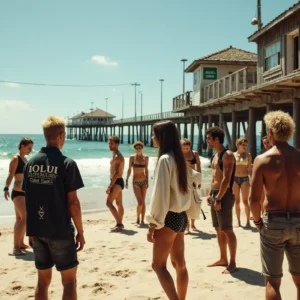Ice skating is a beloved pastime and sport for people of all ages. Still, access to hockey rinks, figure skating training, and recreational skating is often limited by climate or the seasonal operation of traditional rinks. Synthetic ice solves this problem by making skating accessible at any time of the year.
For those exploring synthetic ice rinks for municipalities, this innovation means communities can now offer permanent skating opportunities, regardless of weather or location. Skaters and facility managers benefit from these advances, enjoying more frequent training and recreational experiences without the usual constraints.
Municipalities, schools, and private homeowners have increasingly adopted synthetic ice surfaces—not only because of their practicality but also because they can bring skating to previously underserved areas.
From parks in warm climates to urban shopping centers, synthetic ice is helping to shape a new era of skating accessibility. This reliable surface provides the consistency professional athletes need while enhancing recreation options for families and communities. In addition, it fits perfectly into the broader cultural shift toward sustainability and efficiency in public works projects and personal endeavors.
Contents
Year-Round Accessibility
Synthetic ice’s primary advantage is that it makes ice skating a year-round activity. Unlike traditional rinks that rely on costly refrigeration and ideal ambient conditions, synthetic ice panels are made from high-density polymers that can be used indoors or outdoors.
This makes it possible for athletes to stick to their training routines even during the hottest summer months or in climates that never see snow. Recreational skaters, too, can build their confidence on the ice throughout the year—a development that is especially beneficial for young children just learning to skate and hockey teams seeking unwavering practice schedules.
Synthetic ice opens doors for communities and organizations located in warmer regions that previous generations couldn’t imagine. Schools, colleges, and local governments can now offer skating as a consistent extracurricular or recreational option, supporting public health initiatives by promoting physical activity and community engagement.
According to National Geographic, these installations are transforming public spaces and allowing access to winter sports in places previously out of reach.
Cost-Effectiveness
Associated costs often stall the decision to install traditional ice rinks: refrigeration equipment, daily energy bills, water fees, and the ongoing need for resurfacing and repairs. Synthetic ice minimizes these expenses by eliminating the need for refrigeration and substantially reducing maintenance operations.
Each panel is engineered for durability, often lasting for years even with heavy use—making it a budget-friendly investment. The lack of complex mechanical systems means fewer breakdowns, less downtime, and much lower utility costs. This cost-effectiveness allows more organizations and facility owners to offer skating on a wider scale.
Environmental Sustainability
Traditional rinks, though iconic, are energy- and water-intensive, often requiring substantial daily resources to maintain a frozen surface. In contrast, synthetic ice eliminates the need for refrigeration, drastically cutting electricity usage and greenhouse gas emissions. It also requires no water for its operation or regular resurfacing, conserving a critical natural resource.
For these reasons, municipalities adopting synthetic rinks help reduce their carbon footprint and align with contemporary goals for environmental stewardship. National Geographic examined the shift toward these solutions, highlighting synthetic ice as a growing trend in eco-friendly recreation.
Technological Advancements
Continuous investments in material science have resulted in synthetic ice surfaces that closely mimic the feel and performance of real ice. New developments include infused lubricants within the panels, providing a glide so smooth that professional athletes can fine-tune their techniques just as they would on natural ice.
Precision-engineered interlocking systems create surfaces without gaps or snags, increasing safety and enjoyment. The UV-resistant panels prevent weather-related wear and extend their lifespan, even in outdoor installations. These technological strides mean today’s synthetic rinks are dramatically improved over the early versions—making them viable for competitive skating, hockey, and family fun.
Training Benefits
For athletes and skaters, training consistently is key to improvement. Synthetic ice provides a unique workout: The slightly increased surface friction, compared to real ice, requires skaters to use more force, building leg and core strength.
This added resistance is respected in hockey and figure skating coaching, as it makes the transition back to natural ice easier and helps develop explosive acceleration and balance. The unlimited availability of skating time on synthetic surfaces is invaluable for skill retention, keeping athletes at the top of their game throughout the year.
Community Engagement
Perhaps one of the most positive outcomes of synthetic ice adoption is the way it brings people together. Pop-up rinks at parks, malls, or community centers attract crowds during festivals, school breaks, and public events.
These installations foster social interaction, increase participation in physical activity, and make skating accessible to all—regardless of income or proximity to a traditional rink. They serve as new centers of local engagement, creating opportunities for fun, learning, and community pride.
Conclusion
Synthetic ice is changing the skating landscape for athletes, communities, and facility managers. Its financial accessibility, environmental sustainability, and year-round usability make it a compelling alternative to traditional rinks.
As more municipalities and organizations realize its benefits, synthetic ice is poised to democratize skating and become a lasting part of skating culture—providing enjoyment and training opportunities wherever there’s space for an active community.




